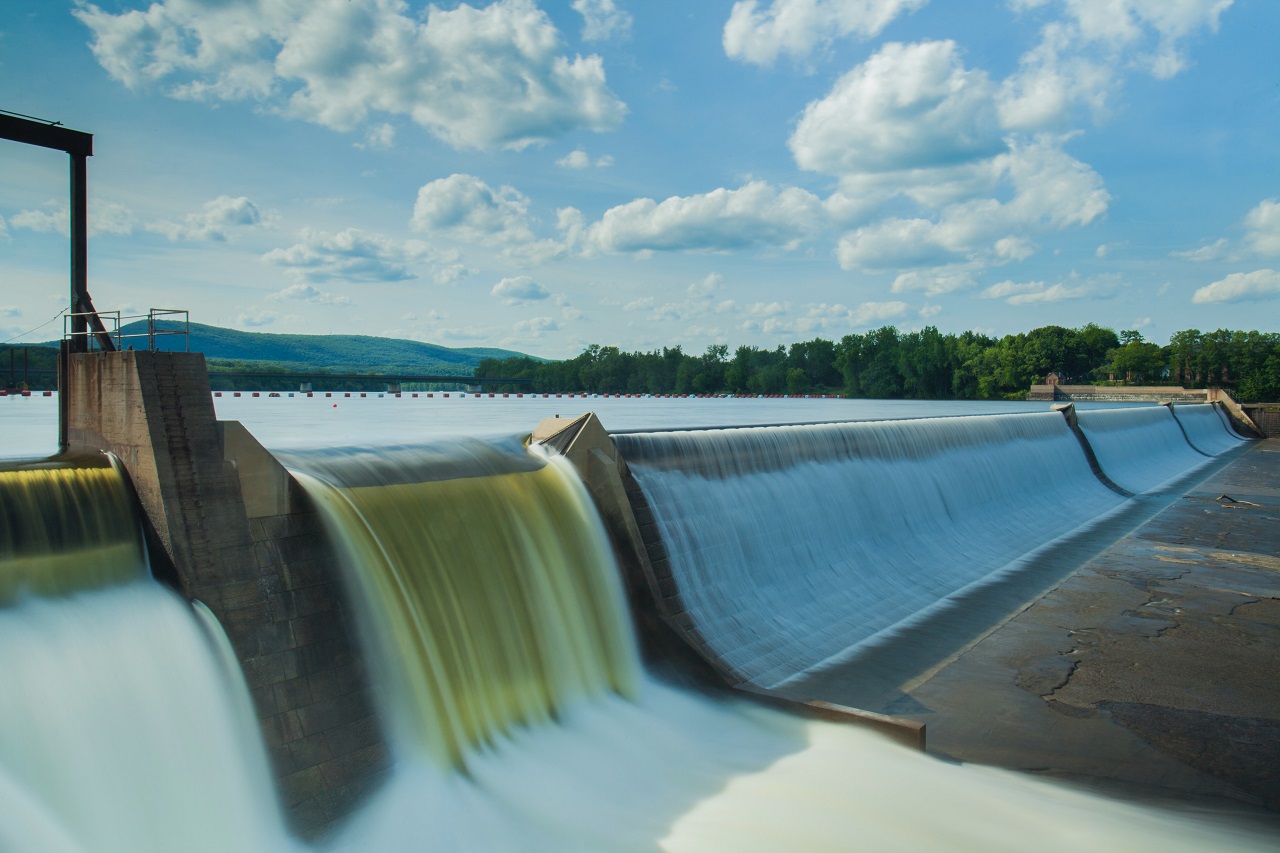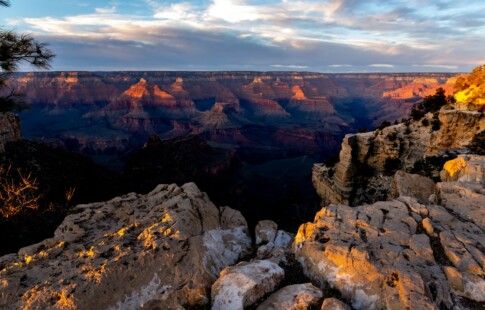
Is Water a Renewable Resource?
We are reader-supported. When you buy through links on our site, we may earn affiliate commission.
Water is commonly accepted as one of the most renewable resources, but is water renewable? Hydropower is one of the ways to a more sustainable future, but as with every topic in environmentalism, there is nuance.
Perhaps water isn’t as renewable as is the assumption and humans should focus on saving water. Take the time to understand the personal relationship with water and usage to get a more accurate perspective on its recyclability and usefulness for renewable energy. It’s crucial to define the constrictions of renewability and how water sits strangely between the categories.
What Is a Renewable Resource vs. a Nonrenewable Resource?
Nonrenewable resources have a life span. Most of the time, humans extract these resources from the ground, such as oil. The planet does not create more and humans haven’t found a way to engineer these resources in a lab or other means. Therefore, every nonrenewable resource humans use daily leads to the extinction of that resource.
Adversely, renewable resources are infinite. Humans can regrow them or the planet produces them through natural processes. People must rely on renewable resources for sustainability or vital operations will come to a halt.
Renewable resources don’t equate to carbon neutrality or constant availability. Resources must go into renewables to help them replenish, and that energy usage can get labor-intensive, financially demanding and resource-heavy if not executed properly.
Right now, water has aspects of nonrenewable resources, but it can manifest into a genuinely renewable resource over time. As with timber, humans fell more trees than they replant, which isn’t renewable either. Thankfully, the water cycle works to recycle what water humans have in a way that regulates usage to a degree.
How the Water Cycle Works
The Earth’s water cycle demonstrates how water continuously moves from water bodies into the atmosphere and transforms into rain. The process does not create new water — it only reuses what’s available in these condensed steps:
- Evaporation: The water changes states of matter, transforming from a liquid into a vapor. It occurs because heat makes the water rise into different parts of the atmosphere.
- Condensation: The higher the water vapor travels into the atmosphere, the colder it gets. Condensation transforms the vapor again into water droplets. They could fall back to Earth in the next step or suspend in the air as clouds or fog.
- Precipitation: Any time particles of water fall from the sky is condensation. It includes rain, hail and sleet. It all depends on temperature because the hardness of the water may change into ice or snow if it encounters lower temperatures.
- Runoff: The water has hit the ground again. Its weight and movement can change the topography, including the height of mountains to the stability of the soil. This movement causes runoff and environments to shift as it adapts to adding water.
Because of this, some may not consider water as renewable as other sources. A proper renewable can be replenished as quickly as it is used — sometimes naturally, sometimes with human intervention. Does water have this capability?
If Water Is Renewable, Why Are There Scarcity Problems?
Much of the world still suffers from water scarcity and an inability to treat water well enough to drink. How is fresh water both a renewable and a limited resource? Only 3% is freshwater — some could be sinking further into the Earth’s mantle. Water pollution and a lack of technology to eliminate certain chemicals force humans to use more resources to make water usable and consumable. These qualities make freshwater a somewhat limited commodity.
Most have heard the statistic that Earth is 70% water. Though this is true, it misconstrues water’s accessibility to most of the world. Humans cannot use all 70% of the world’s water because some of that includes ice caps and water sources that require treatment first before consumption or industrial usage.
Everyone has a water footprint. The average has increased over the years with greater consumption as the population increases.
If humanity cannot eliminate water scarcity, pollution and inaccessibility — while simultaneously replenishing all the water the planet consumes that can’t be recycled — then by definition, water isn’t renewable yet. Humans can increase how renewable water is with a few behavioral changes on an individual level and an increase in technological advancement on a species level.
How to Conserve Water
Humans can recycle or reclaim water that has already been treated or doesn’t need treatment. Rain barrels and grey water collection are prime examples of reclaiming water for other home uses, such as filling up a sink for dishes. Treated wastewater could be reused, so time and energy do not have to be reinvested in retreatment.
Water that humans don’t reclaim could pollute waterways and wetter habitats like wetlands later in its lifecycle. If the water contains chemicals like fertilizers, it could spread, affecting habitats and wildlife.
Water treatment facilities can also incorporate more systemic changes in the sector to decrease the overall carbon footprint required to keep the water clean and renewable. They can dig deeper into researching contaminants like microplastics to treat drinking water. They can also incorporate solar or other renewable energy practices to provide power when executing treatment processes.
A local Department of Energy or Environmental Protection will have resources for advising water usage and conservation in the home and on property. Incorporating as many technological and behavioral shifts as possible will add up to make a massive contribution:
- Don’t run water when not in use, such as face washing or teeth brushing.
- Thaw frozen foods in the fridge instead of using warm water.
- Optimize watering and irrigation systems for gardens and farms with sprinkler systems with smart sensors.
- Keep up with local weather events to ensure households don’t increase water usage or abuse resources during times of drought.
Can Water Be Used as an Energy Source?
Hydropower is the leading renewable energy source in the United States. It is highly valuable worldwide, too, especially as it combines with wind power to create underwater turbines that thrive off reliable tide changes. Hydropower has undergone countless innovations since its inception, manifesting in more ways than classic water wheels and dams.
Scientists are furthering the efficacy of hydropower as an energy source by manufacturing water to fuel energy generation.
To create water, scientists only need to combine hydrogen and oxygen — but is it that simple? When joining the two, explosions occur. Creating water can be dangerous, but science is advancing to develop safer, more sustainable ways of making water more renewable.
- Aquaer: This technology extracts water from the air. It takes the concept of condensation and makes it portable to most environments — even the desert.
- Whisson’s Windmill: Vertically placed, chilled wind turbine blades can force water vapor to liquidate. Wind — a truly renewable resource — can infinitely create water from the air if the wind turbine has capture and storage infrastructure.
- Water generators: Engineers can use air conditioners as inspiration by creating machines that dehumidify, extract and filter water into a tank for drinking.
- Fog-harvesting machines: High in mountains or embedded in high-humidity coastal areas are the perfect places to find fog. Net-like contraptions capture waters as the wind blows fog in the right direction.
The resources and energy going into creating water must be sustainable and renewable for it to be ideal for the planet.
Infinitely Recycling Water
Considering water as a renewable resource is a springboard to analyzing the complexity of renewables. Though water is renewable, humans must pay attention to their usage to keep it that way — otherwise, a negative deficit might form. Humans must protect the planet’s water.
People cannot take water for granted and must find ways to recycle, treat and source water ethically. If they continue to do so, water could be one of the most valuable resources on the planet.
Share on
Like what you read? Join other Environment.co readers!
Get the latest updates on our planet by subscribing to the Environment.co newsletter!
About the author
Jane Marsh
Starting from an early age, Jane Marsh loved all animals and became a budding environmentalist. Now, Jane works as the Editor-in-Chief of Environment.co where she covers topics related to climate policy, renewable energy, the food industry, and more.





